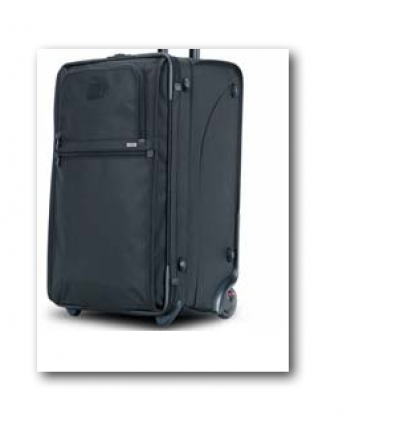Today I present the first of what I hope will be a series of approximately 30, 3-minute instructional videos for students and beginning designers. These will cover a variety of topics which generate the most frequently asked questions I get during seminars and conferences, or that I have experienced need reinforcement as I conduct workshops in newsrooms worldwide.
I have made these lessons extremely basic on purpose: they are not aimed at experienced designers, although these designers may use the lessons for purposes of instructing their staffs. Primarily, these TheMarioClassroom segments are for beginning design students, or copyeditors and others who suddenly find themselves in charge of designing or laying out pages.
TheMarioClassroom videos will appear occasionally, and I will always announce them and offer a preview the day BEFORE they are posted.
And, by the way, the message is what is important here. As you may know, I am cutting my teeth with the new technology, and I am new to video, so be patient with me as my “home made” instructional videos appear. I am sure I will refine them as we go. Learning is a daily part of what we do, no matter how old we are. For me, blogging continues to e fascinating challenge that allows me to review the journalistic skills I learned as an undergraduate more than 40 years ago. Expanding the blog to include other media is part of this learning process. It is fun, and, I hope, useful to all of you.
Don’t hesitate to offer me tips, and, particularly, to let me know of topics you would like me to cover in TheMarioClassroom. Thanks.

I first used the term Center of Visual Impact in my textbook, Contemporary Newspaper Design (1978). It continues to be one of the key elements of my teaching and work. The CVI determines how the eye will move on the page. With a strong CVI, the eye knows exactly what door to kick open first. The page gains hierarchy, and all the other elements fall into place. A CVI can be a photograph, or an illustration, but it can also be a Type Attack, where a dominant headline becomes the dominant element on the page. Today’s video explores the basics of CVI placement.
![]()
More on CVI concept:
http://poynteronline.org/column.asp?id=47&aid=40262


THE INQUIRING INTERN WANTS TO KNOW:
Our curious intern Reed Reibstein, a rising sophomore at Yale University, obviously wants to learn more than design, typography and color utilization during his summer tenure with us. When he saw me arrive in Ottawa last week carrying a small Tumi suitcase, my backpack and a carry on bag, he asked: How many days will you be on the road?
“Well, this is a four-continent, nine-city tour for me,” I answered much to his amazement.
“Oh, I am carrying more just to travel from New York City to Ottawa for five days, so what is the secret??”
No secret, just the experience that comes with packing suitcases for more than 35 years and flying one million miles per year. It is simple!
TIPS FOR PACKING:
Fold things well, so they will occupy less space.
Make a list of the destinations (it helps to think about possible weather conditions), the events (a gala presentation versus two nights in the production room prior to launch), and, in my case, the running conditions (will I only run inside a fitness club, or will I be running outdoors?).
My suitcase contains:
Two suits, seven dress shirts, two sport shirts, running shorts/shirt, running shoes, one sweater, one pair of blue jeans, a light raincoat, a small umbrella, electrical adaptors for various countries, a swimsuit. Underwear and socks. Toiletries and a bottle of cologne.
(And, of course, one no longer can carry bottles of cologne larger than 4 oz. on board, so here is a tip: if I shower at the airline lounge between two long haul trips, I proceed to the Duty Free store closest to me, aim straight for the Guerlain section, find the tester for Vetiver, that old but fantastic cologne that will always be fashionable with me, and if time allows, reach for La Prairie Skin Caviar and squirt a bit on my fingers and run it through my face, and, presto, ready to fly smelling good and perfectly moisturized for the environs of an air cabin).
My backpack and small carry one bag contain my computer and adapters for presentations, contact lenses, reading glasses, my phone chargers, a phone cable for places where wireless is not available, several South Beach power bars, a book, several current magazines, two blank CDs. My Moleskin notebook is always there as well.
That is all one needs to go around the world several times. Indeed, there are laundry and dry cleaning services available at all major hotels.
When my four children were little, my wife Maria and I learned that as long as we had as many arms as kids, all was well. Which is probably why we never had child #5.
Same applies to luggage: you must be able to carry all your luggage yourself, which means you may have to get on a train from Paris to Luxemburg for example, with four minutes to get on and off. You don’t want to leave a piece of luggage behind.
But, one could do this even better. My friend Roger Black tells me that he sometimes ships his luggage ahead of him, allowing him to get in and out of airports quicker. Roger always has a better idea!
Stuff those shoes with essential items: I put a bottle of cologne inside my running shoes, also folded socks, vitamin-pill container and small hairbrush. Every bit of space counts.
There you go, Reed. Another lesson from your summer experience with us.
![]()
Flying from Frankfurt to Lagos, Nigeria, where I spend the rest of the week. Accompanied by our Garcia Media art director, Christian Fortanet,I will conduct final review of the prototype for the new English-language daily to be published in Nigeria. Should be an exciting and productive week.